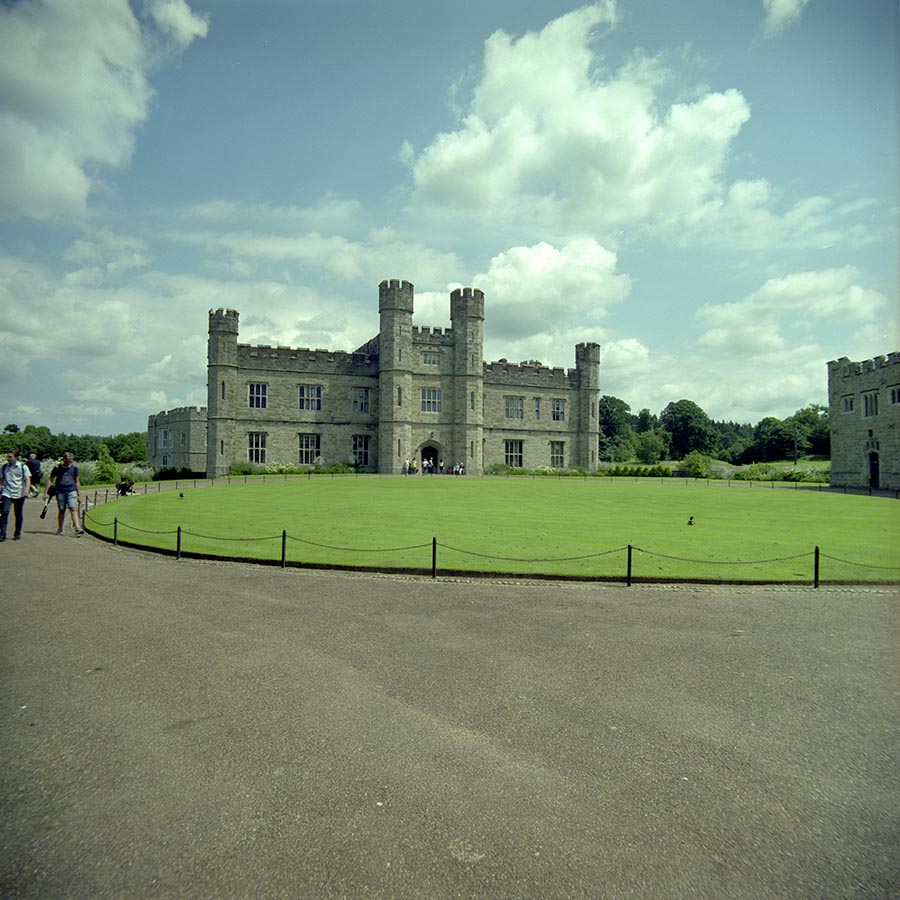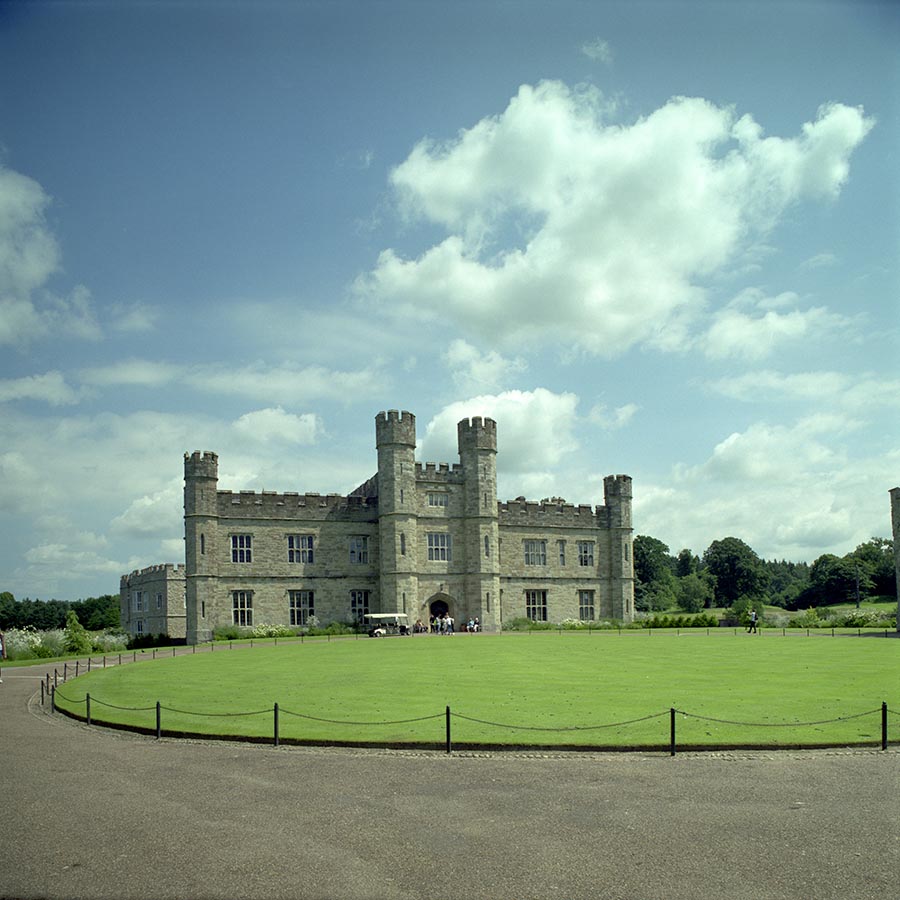On this page we compare the probably-unique Schneider-Kreuznach 40mm Curtagon for the Exakta 66 with a 45mm Hartblei shift-only lens.
More information on the 40mm Curtagon can be found, starting here. The results of other tests with the very same 45mm Hartblei shift-only lens can be seen here.
(Yes, it is in Kent, not in the great city of Leeds in Yorkshire in the north of England.)
Pentacon Six Fuji PRO160NS negative film 1/125 f/19

40mm Schneider-Kreuznach Curtagon lens for Exakta 66
The Curtagon gives us a great wide-angle view of the front of the castle.
However, the composition of this picture would be much better if we trimmed most of the gravel drive at the bottom of the image.
[C557_13_C.jpg]

45mm Hartblei PCS shift-only lens in Pentacon Six mount
From exactly the same position, we can see the reduction in the width of coverage when using a 45mm lens.
The Hartblei lens is here shifted 9mm up, resulting in a major reduction in the amount of the drive that is shown at the bottom of the image,
while more sky is visible than would have been the case with a non-shift 45mm lens.
[C557_12_H.jpg]
Which of these images is better? That is of course a matter of opinion. However, I consider that the section of another building to the right in the Curtagon image adds nothing to the image, and the expanse of gravel drive at the bottom of the image detracts from it. Of course, if there had been a procession of ducks walking across the gravel, that might have shown the superiority of having the widest-possible lens. Unfortunately, there were no ducks in the vicinity. So I consider that in this instance, the 45mm shift lens gives a more pleasing image. A tiny bit of the other building on the right can be seen, and in real life we would of course crop that out, but the purpose here is to give a fair comparison between the two lenses. It is pleasing to note that with the Hartblei lens shifted 9mm up, there is no sign of vignetting (darkening of the corners of the image).
However,
there are some other considerations:
- This particular 40mm Curtagon is the only example of this lens that I am aware of in the world.
- The 40mm Zenza Bronica lens that produced one of the pictures of St Albans Abbey that can be seen here is a custom adaptation and may well also be the only example of this lens in the Pentacon Six mount in the world.
- This means that the widest lens in the Pentacon Six mount that one is likely to find is either the 45mm Arsenal (or ARSAT) Mir 26b, which is easy to find, or the extremely rare 45mm Mir-69 lens, reported on here.
- If we limit ourselves to Carl Zeiss Jena lenses designed for the Pentacon Six, the widest is the excellent 50mm Flektogon, reported on the same page, here.
Results obtained with the Wiese shift-only version of this lens can be seen here. The images shown there reveal what happens when the lens is shifted further than is advised for 6 × 6 format.